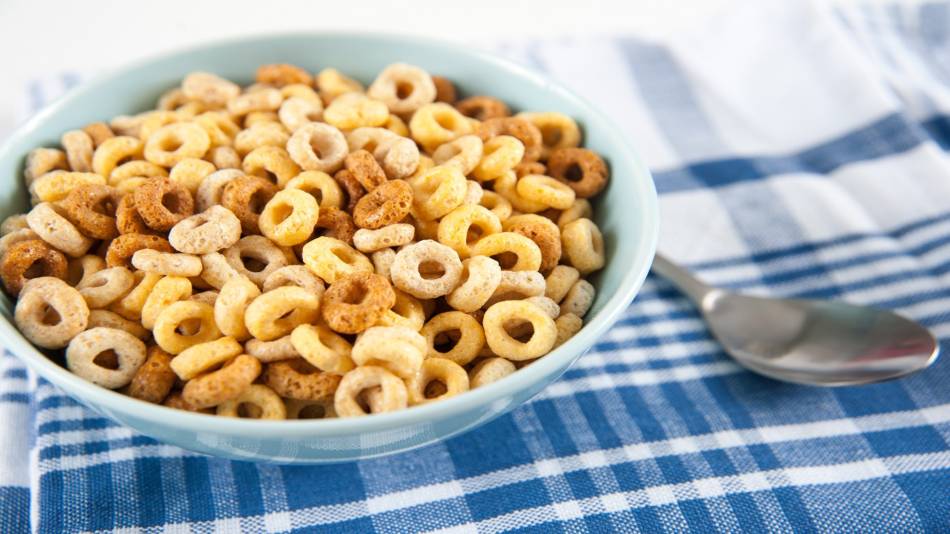
Answer:
What's glyphosate?
Glyphosate is the synthetic chemical in RoundUp herbicide, designed to kill weeds around plants that have been genetically altered to withstand it, such as genetically modified (GMO) soybeans and corn. It is also sprayed on many types of conventional crops such as wheat, oats, and barley prior to harvest as a drying agent and to even-out maturity. A USDA study published in 2014 found that it was also commonly used on cherries, avocados, apples, lemons, grapefruit, peanuts, and pecans (USDA 2014). Glyphosate is also found in processed foods containing these ingredients and cannot be removed by washing, cooking, or baking. It can remain stable in food for a year or more.
Is glyphosate safe?
According to the U.S. EPA, glyphosate has a low toxicity for people and is not likely to be carcinogenic in humans. It has established tolerance limits for the concentration of glyphosate permitted in a wide range of human and animal food crops, including corn, soybean, oil seeds, grains, and some fruits and vegetables, ranging from 0.1 to 400 parts per million (ppm), equivalent to 100 to 400,000 ppb. For oats, for example, the limit is 30 ppm or 30,000 ppb. The EPA has noted that pets may be at risk of digestive or intestinal problems if they touch or eat plants that have just been sprayed.
California applies stricter limits for glyphosate in foods. Products that contain more than 1,100 micrograms (mcg) of the herbicide glyphosate per daily serving are required to have a warning label if sold in California. The label warns that the product contains a chemical known to cause cancer and birth defects or other reproductive harm. This level of exposure is estimated to pose a 1 in 100,000 lifetime risk of cancer, as determined by the International Agency for Research on Cancer part of the World Health Organization. However, as discussed below, it seems unlikely that any food product will exceed this limit.
Similar to the U.S. EPA, the European Food Safety Authority concluded that glyphosate is unlikely to pose a carcinogenic hazard (and that it does not have endocrine disrupting properties) but set a maximum acceptable daily intake limit based on reproductive toxicity shown in animal studies. The limit in Europe is currently set at 0.5 milligrams (or 500 mcg) of glyphosate daily per kilogram of body weight, which works out to about 34 milligrams, or 34,000 mcg, for a 150-lb. person.
Laboratory studies have shown that glyphosate can affect some bacteria that occur in the digestive system because it blocks a biochemical pathway for aromatic amino acid synthesis (the Shikimate pathway) that occurs in some bacteria (as well as in plants, but not in animals). However, short-term in vivo experiments in rats given high doses of glyphosate (equivalent to 50 times the European limit based on body weight) have only shown very limited effects, presumably because of the abundance of amino acids in the gut that alleviate this biochemical effect (Nielsen, Environ Pollution 2018).
The risk of autism has been shown to be higher among children born to pregnant women who live within one mile of agricultural areas where pesticides are sprayed than in areas where they are not sprayed, and this risk was highest with glyphosate relative to other chemicals (von Ehrenstein, BMJ 2019). As a widely used herbicide, there are also concerns about the direct and indirect impacts of glyphosate on non-agricultural plant and animal life, including a decline in monarch butterfly populations due to loss of milkweed, a food source, in and around agricultural areas (Friends of the Earth, 2013).
How much glyphosate is in foods?
Sign in as a member to see how much glyphosate has been found in oat-based foods and chocolates, including brands such as Cheerios, Bob's Red Mill Organic, Nature's Path, Simple Truth, Quaker and Whole Foods, as well as amounts found in oat milks, and chocolate bars from Godiva, Hershey’s, MrBeast and Theo.
The bottom line: Glyphosate safe or unsafe?
Glyphosate is known to cause reproductive toxicity based on animal models, and it may possibly be a carcinogen -- although there is dispute about this. Due to its widespread use as an herbicide, it is found in many foods. However, at standard serving sizes (and even several times those sizes) even foods with the highest known concentrations of glyphosate, such as conventionally grown oats, appear to contain amounts of glyphosate far below those that pose a safety risk or require any type of warning. If you are concerned, glyphosate can be largely avoided by choosing organically grown foods. Be aware that "organic" processed foods, such as cereals, may still contain a very small amount of glyphosate, likely due to cross-contamination of ingredients.
When evaluating reports on glyphosate, it is important to distinguish between the concentration in a product, typically in ppb (1,000 ppb = 1 mcg per gram), and how much you would consume, i.e., the concentration times the grams in a serving.
Also see ConsumerLab.com's Oat Cereals Review, which compares amounts of ochratoxin A (a potential carcinogen and kidney toxin) and gluten in popular products and discusses possible levels of chlormequat (a plant growth regulator) in certain oat products. Glyphosate was not tested in the Review, which was conducted prior to the classification of glyphosate as a probable carcinogen in the U.S., but levels would likely be similar to those reported above.
Join today to unlock all member benefits including full access to all CL Answers and over 1,400 reviews.
Join NowAlready a member? Sign In Here.
Join now at www.consumerlab.com/join/








Submit your comment
This feature is restricted to active members.
Join now to add comments and get all member benefits, including over 1,400 reviews.
Join NowAlready a member? Sign in here.